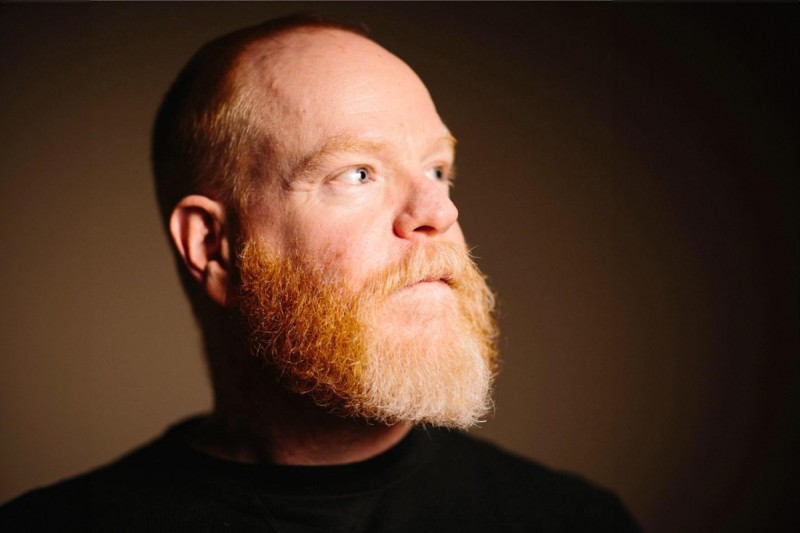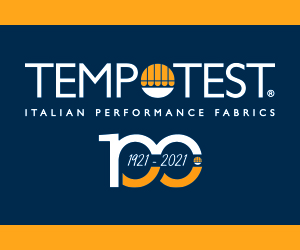Lenzing’s TENCEL™ Fibers, LENZING™ ECOVERO™ Viscose Fibers Covets Upholstery; Strong Consumer Branding, Hangtags Should Help
October 20, 2023

Bridgham Walter
VIENNA, AUSTRIA— The Lenzing Group is turning its attention to the upholstery fibers market after achieving success in the apparel, bedding and towel business.
LENZING™ ECOVERO™ Viscose, TENCEL™ Modal and TENCEL™ Lyocell are Lenzing Group’s portfolio of cellulosic fibers made from sustainably sourced wood and are certified biodegradable and compostable* according to Bridgham Walter, Senior Business Development Manager in the USA.
Certainly the ‘back to nature’ movement has propelled the sales of these fibers in the home furnishings industry, Walter suggests.
Lenzing thinks it can dramatically increase its share of the unbranded viscose market in upholstery.
Lenzing’s production process is a closed loop process where chemistry and water are captured greater than 99.5% and reused, according to Walter. He and his counterparts in Turkey, India, China, SE Asia and Europe are going full speed ahead to market Lenzing’s fibers worldwide of this 2.6 billion Euro fiber producer with 990,000 tons of annual fiber production.
Lenzing is a publicly traded company on the Vienna Stock Exchange prime market (ATX). While sales were up last year, it lost money. The company says fiber sales and margins are based on the global fiber market. “Covid impacts are still affecting the supply chain from retail all the way back to raw material,” Walter adds. “Our fibers go into many applications from nonwovens like baby wipes, diapers, filters, feminine hygiene products, to intimate apparel, denim, general apparel, active wear, as well as home products, rugs, bedding products and more including upholstery.”
“All three of our fibers are perfect solutions for the upholstery market,” says Walter. “Price would be the biggest consideration and the end use expectations. Pricing for our fibers is based on the fiber market.
Our fibers are priced by each of our three regions based on market conditions,” he adds. “Lyocell prices are very similar to cotton and LENZING™ ECOVERO™ Viscose pricing falls below that. Modal is slightly higher than our Lyocell. You will find that LENZING™ ECOVERO™ falls in pricing lower that our TENCEL™ branded fibers (Lyocell & Modal) and in general TENCEL™,” he adds.
“Depending on the pricing strategy of the fabric, the mill will determine which fiber is best suited to customer needs. This would also depend on the customers’ desire to use branding; the other consideration is performance of the fabric. Our viscose (LENZING™ ECOVERO™ Viscose) is produced more sustainably. Our TENCEL™ branded fibers Lyocell and Modal are fibers that would have a better performance because they are stronger fiber,” he states
As for the differences in these fibers: “Viscose is the oldest technology invented in the 1930’s, Walter says. “Modal was invented in the 1960’s to overcome performance challenges of viscose (modified viscose process). Lyocell was invented in 1992 and is the strongest of the fiber family and with the most options in size and length as well as technologies,” he explains.
Upholstery made from these fibers can also mixed with cotton and polyester as Raymakers of Holland (now part of Lantal of Portugal) has done with a velvet collection.
LENZING™ ECOVERO™ Viscose, TENCEL™ Modal and TENCEL™ Lyocell are Lenzing Group’s portfolio of cellulosic fibers made from sustainably sourced wood and are certified biodegradable and compostable* according to Bridgham Walter, Senior Business Development Manager in the USA.
Certainly the ‘back to nature’ movement has propelled the sales of these fibers in the home furnishings industry, Walter suggests.
Lenzing thinks it can dramatically increase its share of the unbranded viscose market in upholstery.
Lenzing’s production process is a closed loop process where chemistry and water are captured greater than 99.5% and reused, according to Walter. He and his counterparts in Turkey, India, China, SE Asia and Europe are going full speed ahead to market Lenzing’s fibers worldwide of this 2.6 billion Euro fiber producer with 990,000 tons of annual fiber production.
Lenzing is a publicly traded company on the Vienna Stock Exchange prime market (ATX). While sales were up last year, it lost money. The company says fiber sales and margins are based on the global fiber market. “Covid impacts are still affecting the supply chain from retail all the way back to raw material,” Walter adds. “Our fibers go into many applications from nonwovens like baby wipes, diapers, filters, feminine hygiene products, to intimate apparel, denim, general apparel, active wear, as well as home products, rugs, bedding products and more including upholstery.”
“All three of our fibers are perfect solutions for the upholstery market,” says Walter. “Price would be the biggest consideration and the end use expectations. Pricing for our fibers is based on the fiber market.
Our fibers are priced by each of our three regions based on market conditions,” he adds. “Lyocell prices are very similar to cotton and LENZING™ ECOVERO™ Viscose pricing falls below that. Modal is slightly higher than our Lyocell. You will find that LENZING™ ECOVERO™ falls in pricing lower that our TENCEL™ branded fibers (Lyocell & Modal) and in general TENCEL™,” he adds.
“Depending on the pricing strategy of the fabric, the mill will determine which fiber is best suited to customer needs. This would also depend on the customers’ desire to use branding; the other consideration is performance of the fabric. Our viscose (LENZING™ ECOVERO™ Viscose) is produced more sustainably. Our TENCEL™ branded fibers Lyocell and Modal are fibers that would have a better performance because they are stronger fiber,” he states
As for the differences in these fibers: “Viscose is the oldest technology invented in the 1930’s, Walter says. “Modal was invented in the 1960’s to overcome performance challenges of viscose (modified viscose process). Lyocell was invented in 1992 and is the strongest of the fiber family and with the most options in size and length as well as technologies,” he explains.
Upholstery made from these fibers can also mixed with cotton and polyester as Raymakers of Holland (now part of Lantal of Portugal) has done with a velvet collection.
















